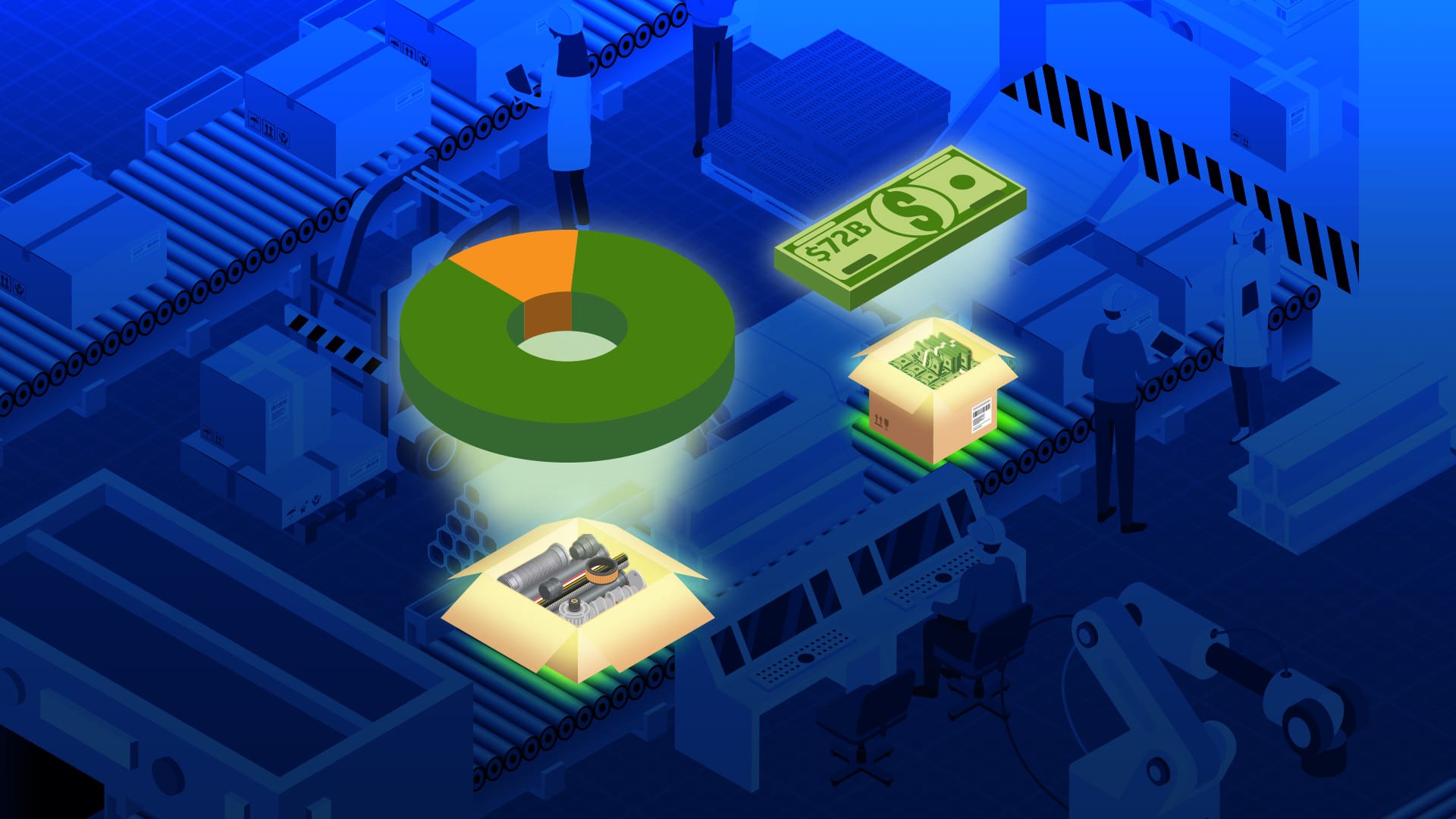Help us improve your experience. See content that is made for you!
See how IBM increased their efficiency by up to 30%!

Help us improve your experience. See content that is made for you!
See how IBM increased their efficiency by up to 30%!


Simply put, the factory of today will be nothing like the factory of tomorrow. Innovation and transformation are core to the manufacturing industry, and with ever newer technology, factories can become more and more productive over time.
There’s one big and unexpected component that could pave the way for more technology, innovation, and efficiency in manufacturing: connected construction. This industry shifting approach is the result of more advanced technology, data, and smart factories, which increase production and support a healthy bottom line for any manufacturing business.
The infographic below will show you how connected construction can advance manufacturing – and how you can stay ahead of the curve on industry developments.

According to a study by McKinsey & Company, the global market for in-house and outsourced facilities management is estimated to reach $1.9 trillion by 2024. Moreover, 10 to 25% of total indirect spending in factories is on facility management. With such rising costs, effective management is now more important than ever, and understanding a factory’s needs are vital.
Additionally, according to ServiceMax, 70% of companies lack complete awareness of when equipment assets are due for maintenance or upgrading. Each day, week, and month maintenance of factory assets is deterred, costs increase. Keeping tabs of this schedule, implemented by software, can support a factory in always meeting equipment maintenance and upgrade schedules. As factory processes improve, it’s equally important to improve data infrastructure, too. For example, the U.S. automotive industry loses $1 billion annually due to the lack of data interoperability throughout the data supply network. Data cannot just exist—it needs to coexist and work in partnership to inform and assist a factory’s team in implementing decisions and problem solving. All of this starts in construction.
Smart factories are the way of the future, but it’s critical to understand why and how a smart factory can support your evolving manufacturing needs. Otto Motors defines a smart factory as “a highly digitalized and connected environment where machinery and equipment are able to improve processes through automation and self-optimization.” In this definition, digitalization and connectedness are key. Digitalizing assets can greatly improve efficiency, and experts from McKinsey argue that it will result in a 3 to 5% increase in productivity, a 30 to 50% reduction of total machine downtime, and a 20 to 50% reduction in the cost of inventory holding. These statistics are remarkable in helping to improve the bottom line of any manufacturing business.
Recently, when GE Healthcare transitioned to a smart factory, they were able to achieve a 66% increase in productive floor space from increased rates of production. Another study found that, in just six months, a mid-size manufacturer leveraging data from existing assets and investments could see the following benefits:
Smart factories are becoming the way of the future — and adapting today can guarantee a more prosperous tomorrow. However, it starts by building a foundation of connected data – starting in construction.
Connected construction breaks down silos between production and facility teams and makes data portable, creating a seamless flow of construction information from preconstruction through operations. This encourages even more opportunities to decrease costs and create a more efficient product.
As connected construction becomes the norm, more companies need to adapt their data infrastructures to become more seamless. There are a number of identifying attributes of high quality data, including consistency, cleanliness, transparency, usability, and connectivity. These characteristics help to power any data infrastructure, and prepare an organization to become an ecosystem of connected construction.
Connected construction can support advanced manufacturing in three ways: a common data environment, a complete handover package, and equipment and asset visibility. To provide more context, a common data environment ensures that up-to-date information is accessible from anywhere. As a result, there are faster project completion times and lower costs during construction. In complete handover packages, facility owners and operators have a complete history of construction and facility data thus increasing production line uptimes while reducing contingency budgets. Lastly, equipment and asset visibility allows reduced facility costs and proactive insight into maintenance needs, along with data to support renovations, upgrades, and space reconfigurations. All of these significantly help advance manufacturing by connecting the dots through data and production.
Transforming a factory with connected construction can be a daunting task, but the payoff is valuable for any business. It is imperative to not only understand the cost savings, but also the increases in efficiencies and production. In the highly competitive world of manufacturing, factories that don’t innovate will be stuck in the past. The next time that you consider upgrading your factory, consider the benefits of connected construction—and enter the future of manufacturing.

May we collect and use your data?
Learn more about the Third Party Services we use and our Privacy Statement.May we collect and use your data to tailor your experience?
Explore the benefits of a customized experience by managing your privacy settings for this site or visit our Privacy Statement to learn more about your options.